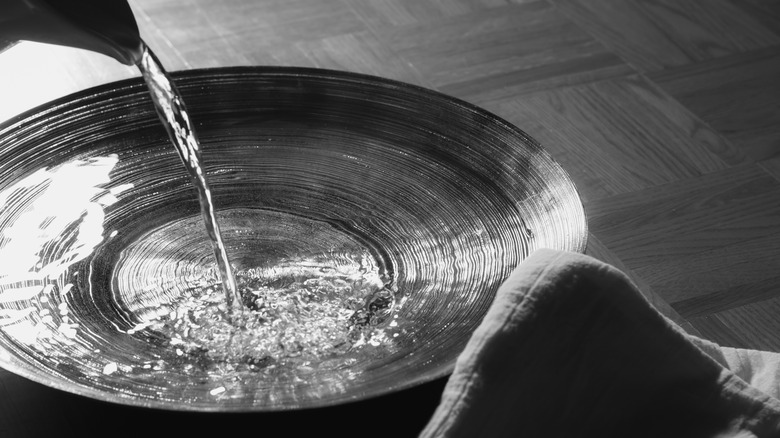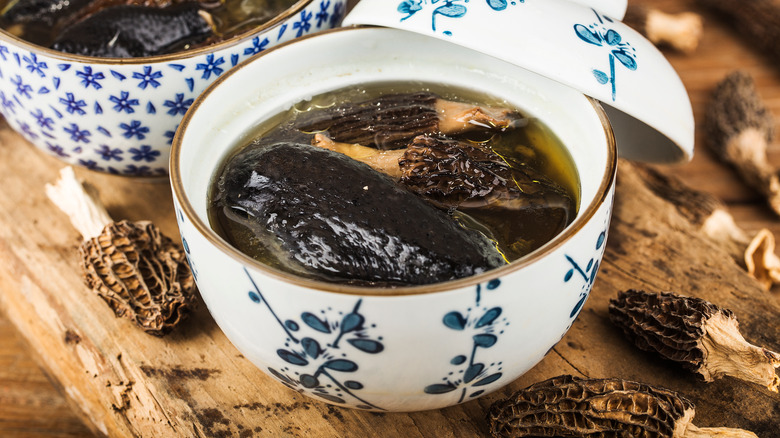What Does It Mean When Your Recipe Says To 'Reconstitute' Something?
If you have been looking to improve your skills in the kitchen, there is no substitute for practice. While physically cooking is the best way to build muscle memory and get a sensory feel for color and cook times, flipping through your best cookbooks can help introduce you to new techniques. With this comes a whole new vocabulary of cooking terminology. There are simple concepts like understanding the difference between deep frying and shallow frying or saute vs braise, but what about lesser-known techniques like tempering, sous viding, or reconstituting?
While it takes years to master the art of cooking and all of its terminology, let's start with the term "reconstitute." According to Cook's Info, to reconstitute something means to rehydrate it. It sounds straightforward, but questions remain: How does something get rehydrated? Why was the food dehydrated in the first place? And what sort of things must be reconstituted in the first place? Let's dive in!
Time to reconstitute!
The reason to dehydrate food is to preserve it, which saves money, reduces food waste, and can help with food preparation. Everything from meats to mushrooms can be dehydrated. And while some foods can be consumed in their dehydrated state, like beef jerky or fruit leathers, something like bullion cubes must be reconstituted in liquid to be used (via WebMD). While dried bullion cubes will dissolve fully into the liquid, reconstituting dried fruits requires putting them in water to plump them back up, as is done when making fruitcake.
In order to reconstitute food, it must be placed in some form of liquid, usually water. When foods are dried, the moisture is either partially or fully removed through dehydration, so reconstituted food might not be fully dried but instead condensed (via Cook's Info). We want either to make use of that concentrated flavor for the dish (as in a bouillon cube or demiglace) or rehydrate whole ingredients to return them to as close to fresh as possible. As Better Homes & Gardens notes, when reconstituting food, the introduction of liquid helps bring it back to its original texture or strength.
And if you spend any time in the kitchen at all, chances are you have already rehydrated something. If you've ever soaked dried beans, turned powdered milk into liquid milk, or even made dried pasta, you've engaged in reconstitution!

